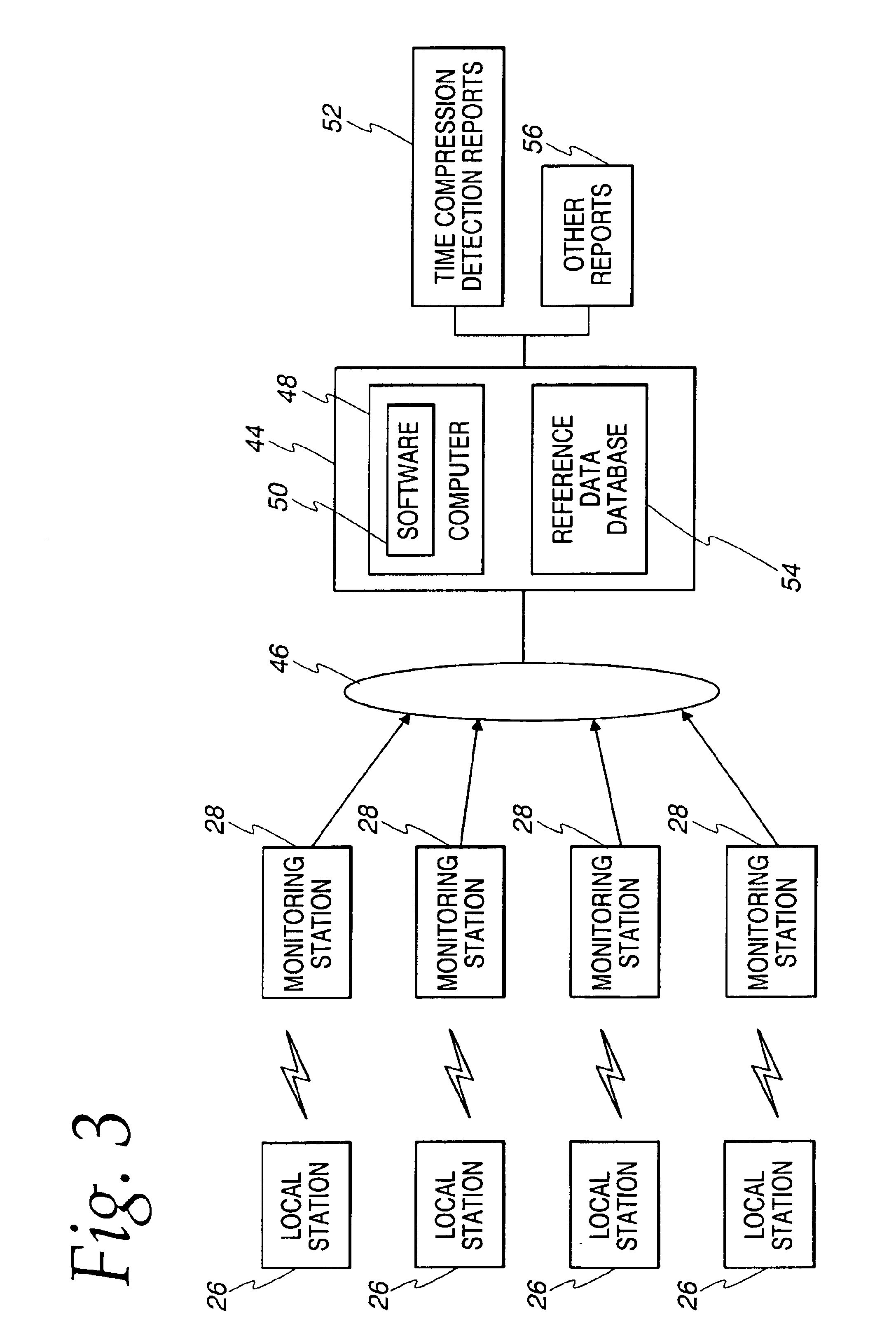Method and apparatus for detecting time-compressed broadcast content
a technology of broadcast content and detection method, applied in the field of broadcast signal monitoring, can solve the problems of content owners having no way of knowing whether their content is compressed or not, and the time compression is not detectabl
- Summary
- Abstract
- Description
- Claims
- Application Information
AI Technical Summary
Benefits of technology
Problems solved by technology
Method used
Image
Examples
Embodiment Construction
[0012]Turning now to FIG. 1, a system for detecting time-compressed content in accordance with one embodiment of the present invention generally includes a content encoding stage 10 for encoding content previously created in a content creation stage 11, a content broadcasting stage 12 for broadcasting the encoded content, a content monitoring stage 14 for receiving the broadcasted encoded content, and a time compression detection stage 16 for determining whether the encoded content has been time compressed.
[0013]In FIG. 2, content 18 such as a national program, commercial, a syndicated program, a local program, an infomercial, etc., to be encoded by, for example, national TV networks, commercial creators or program syndicators, is supplied to an encoder 20, which may be implemented using a commercial encoder such as, for example, the Nielsen Audio / Video Encoder (NAVE) encoder developed by Nielsen Media Research, Inc. In one embodiment, the encoder 20 is implemented using an encoder ...
PUM
 Login to View More
Login to View More Abstract
Description
Claims
Application Information
 Login to View More
Login to View More - R&D
- Intellectual Property
- Life Sciences
- Materials
- Tech Scout
- Unparalleled Data Quality
- Higher Quality Content
- 60% Fewer Hallucinations
Browse by: Latest US Patents, China's latest patents, Technical Efficacy Thesaurus, Application Domain, Technology Topic, Popular Technical Reports.
© 2025 PatSnap. All rights reserved.Legal|Privacy policy|Modern Slavery Act Transparency Statement|Sitemap|About US| Contact US: help@patsnap.com



